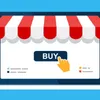How to start your ecommerce business: a guide for D2C sellers
The COVID-19 pandemic upended most businesses and sectors, but ecommerce stood tall. It’s time to go online and these tips will help you do that.
The ecommerce market in India was valued at a whopping $38.5 billion in 2017. This valuation rose to $120 billion in 2020, showing the highest growth in the world.
While the COVID-19 pandemic brought several industries to a screeching halt, this vertical sailed through the crisis with little or no damage. In fact, it prosperously rode the COVID-19 wave.
This is something your brand cannot afford to overlook as countless top-notch brands are leveraging ecommerce to stay on top of their game. If your business has not yet integrated ecommerce operations, you have been missing out on great potential.
Here are some pro tips for starting an ecommerce business:
Building an ecommerce shop
Consumer behaviour is changing substantially and many businesses are taking their operations online. A product is only a tab away once a consumer makes a purchasing decision, all thanks to the digital revolution.
The market is witnessing cut-throat competition and there can be no further delays in starting your ecommerce business.
The key takeaway here? Transition from offline to online operations with an ecommerce shop.
Setting up an ecommerce store
Establishing an online store and selling your products is easier than you think. Your hesitancy in setting up a website may be due to the complexity of this function. But the case is otherwise. All it takes is an automated web store builder to take your Direct to Consumer (D2C) business online.
Many service providers can help you get started. For one, you can enlist the free-of-cost services of web builders such as Shiprocket Social. All you have to do is create an account by filling in KYC details such as name, company name, location, etc. The next few steps are to launch your e-store, upload products, and integrate different payment modes to give your customers the capability to browse through your catalogue and place an order.
Now that you have created an ecommerce store, it is important to streamline and optimise your operation to create an exceptional consumer experience.
Setting up an online shop is only the beginning of the journey towards growth and expansion. Now you have to invest in creating and keeping an audience for your products.
One tried-and-tested method is to enhance your checkout and enable smooth digital payments. This is a vital feature considering the prominence of contactless experience driven by the pandemic.
Keep an eye on easy dropshipping
Your products are the core assets of your business. Their tenability as a product can make or break a business. If you carry out your own market research, you will learn that the most popularly bought items online are those that are high on the dropshipping quotient.
In other words, they are easy to ship for a third-party logistics provider, and you, the seller, as well. Logistical automation is crucial, and third-party logistics and fulfillment providers can ramp up your efficiency and boost business to a large extent. Third-party packaging facilities can also ensure a transition-friendly experience for your products.
The key takeaways
Ecommerce is an ultra-competitive market. To dominate in your product segment, you need to study your competitors and know everything there is to know about them – what they are selling to the audience, the pain points they are addressing, and their marketing strategies.
This lets you up your game by offering high-convenient products, fine-tuning your brand service, and knowing what rises and falls out there.
Edited by Teja Lele
(Disclaimer: The views and opinions expressed in this article are those of the author and do not necessarily reflect the views of YourStory.)








